Conductive Origami, the project that combines 3D printing, textiles & lighting
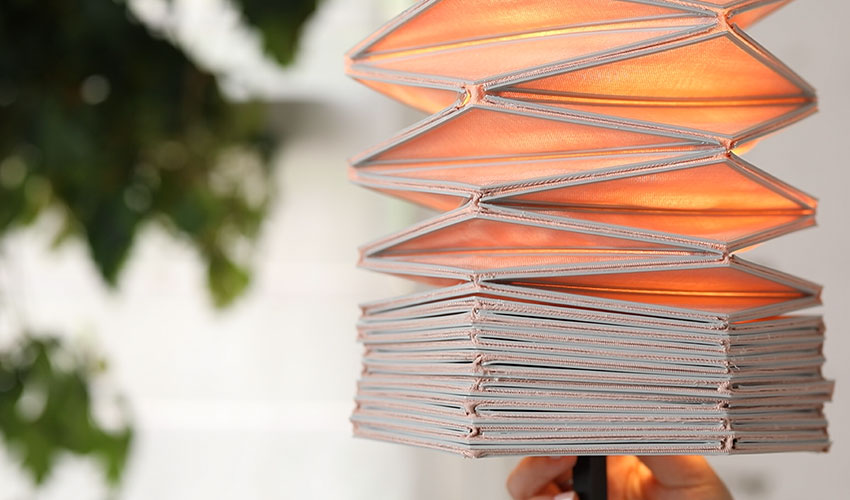
The evolution of materials in 3D printing has opened the door to a number of groundbreaking applications. In the design sector, it is certainly a way for artists and designers to explore art with 3D printing. This is how young designer Yael Akirav decided to create her project, Conductive Origami. Her project is a series of original lamps created by exploring conductive materials, 3D printed directly from different textiles.
Inspired by ancestral origami techniques, Yael Akirav came up with the idea of blending these techniques with additive manufacturing to create unique accessories that illuminate as they expand. Yes, they don’t have a switch since the materials works as a conductor. This week we talked to Yael about her project and the importance of 3D printing in design in order to innovate.
3DN: Can you introduce yourself and tell us about your experience with 3D printing?
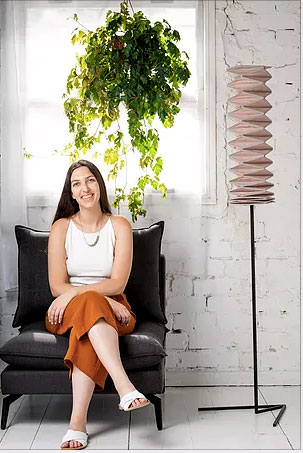
I’m Yael Akirav, 27 years old, an industrial designer from Israel, Jerusalem. I recently graduated from the industrial design department at Bezalel academy of art and design. During my studies I was exposed for the first time to 3d printing technologies and it became my passion. Another passion of mine is using textile as a material for my designs, (I experimented using textile at my projects, first at Tiny Light and after Bloomiez), so It was only natural for me to combine them both .for my final project at Bezalel – Conductive Origami.
3DN: What is Conductive Origami and how did the idea come about?
Conductive Origami is a series of lighting fixtures 3D printed directly onto textiles. Rigid printing on textile allows the creation of complex elements. When the printed material conducts electricity, the intersections that stem from the art of origami present a new opportunity – turning on the light by contracting and stretching the structure. The conductive filament is also used as the structural skeleton of the lighting fixtures, each with its own unique folding and opening method
The project was inspired by origami folding techniques and explored the boundaries of 3D printing directly onto textile. I started with folding paper in the traditional origami way and wondered how I can make such folds easily on textile. After several ways of folding, heading fabrics and ironing, I turned to 3d printing. I took the principles of origami folding and tried to make them on my textile design object. Surprisingly the 3d filament acted as a structure skeleton and this offered me a way to fold and stretch the fabric multiply times. During the next stage of the research I was exposed to the conductive filament that is based on conductive silver ink. By combining the skeletal structure and conductive trait I created a new way of lighting up my lamps.
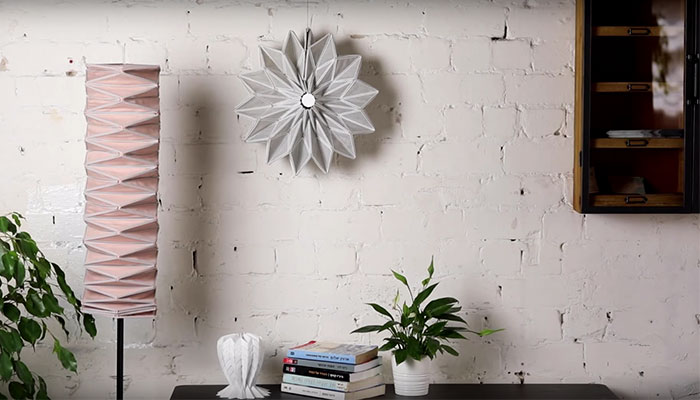
Credits: Ofek Avshalom
3DN: Why did you decide to use 3D technologies for Conductive Origami?
I examined different kinds of conductive materials, some of them were not conductive enough for my lamps, until I found this conductive filament (based on conductive silver ink) that conducts electricity in a perfect way, just as I imagined. To date, the material is still a prototype, so I hope that in the near future the material will be ready for everyone to use.
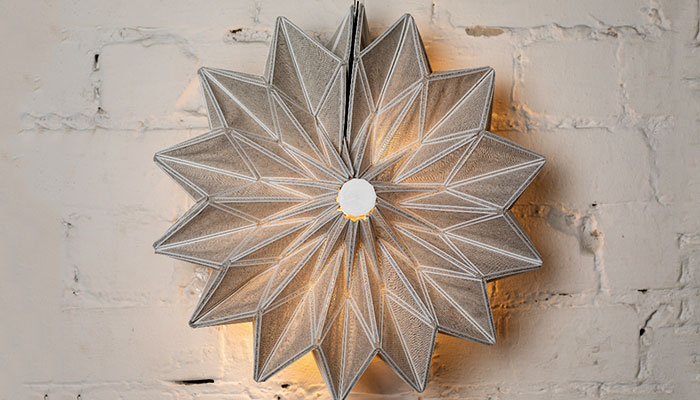
Credits: Ofek Avshalom
The series includes 3 lighting fixtures, each has its own fold and opens differently. Each lamp has two looks, when they are open- stretched and lit, and when they are folded back to the closed position. The conductive filament allows me to use the structure as a dimmer switch for each object. when I stretch the structure, the light turns on gradually and when I fold it back again the light slowly turns off. For my series I designed two ways of opening: vertically and round opening lamps. The third lamp also has a round opening, but its unique quality is that I used two different colors of the filament to create a new surprising visual look. When the lamp is off the textile looks completely white, and when the light is on the black and white pattern is revealed through the fabric.
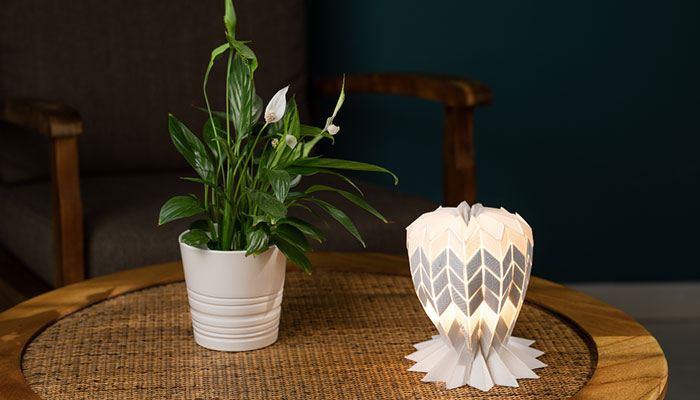
Credits: Ofek Avshalom
3DN: What are your future projects?
These days I’m still investigating the boundaries of 3D printing onto textile, in order to expand to more territories using the benefits of 3D printing. You can find more information on the website HERE.
*Cover Photo Credits: Ofek Avshalom
What do you think of the Conductive Origami project? Let us know in a comment below or on our Facebook and Twitter page! Don’t forget to sign up for our free weekly Newsletter, with all the latest news in 3D printing delivered straight to your inbox!







super clever